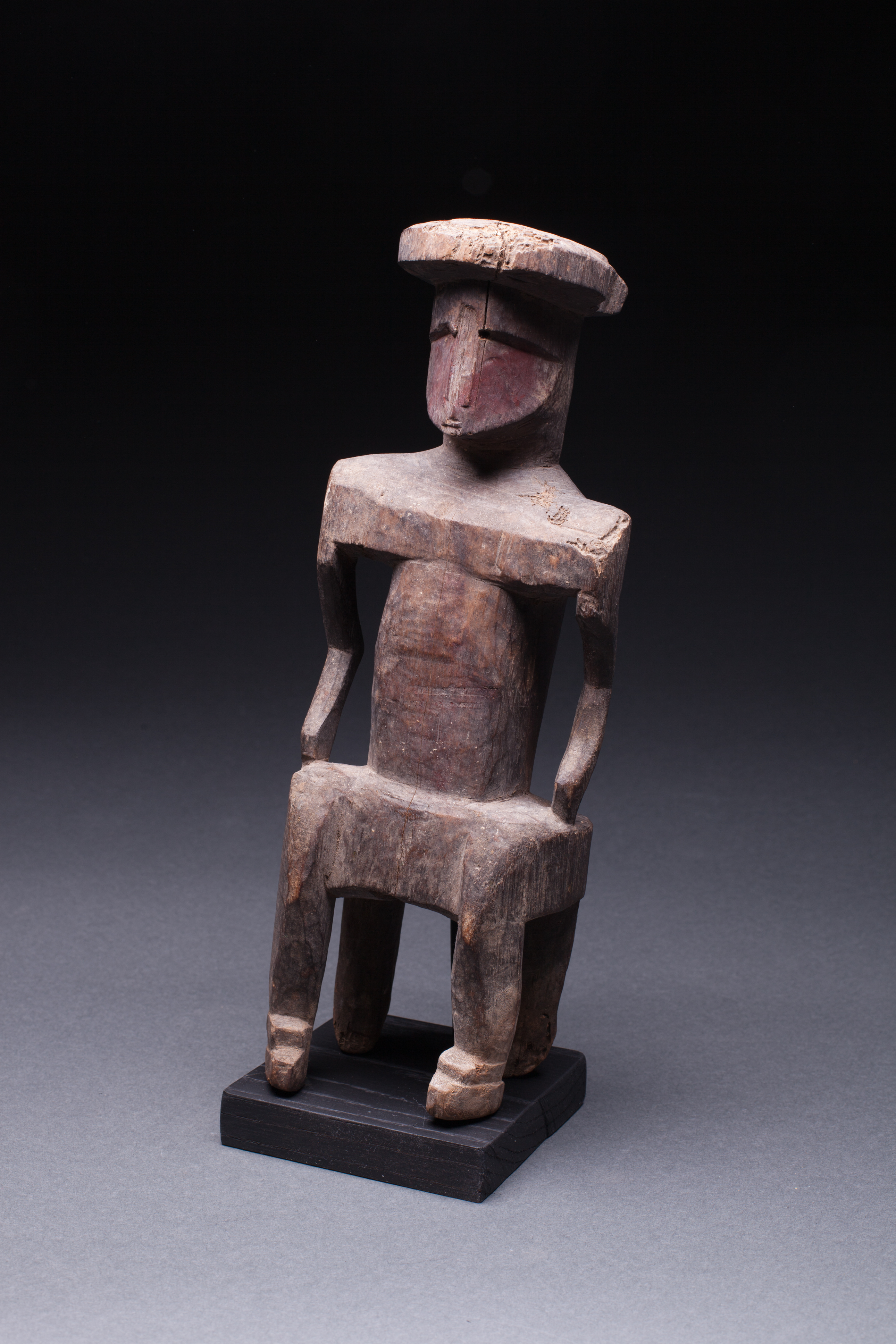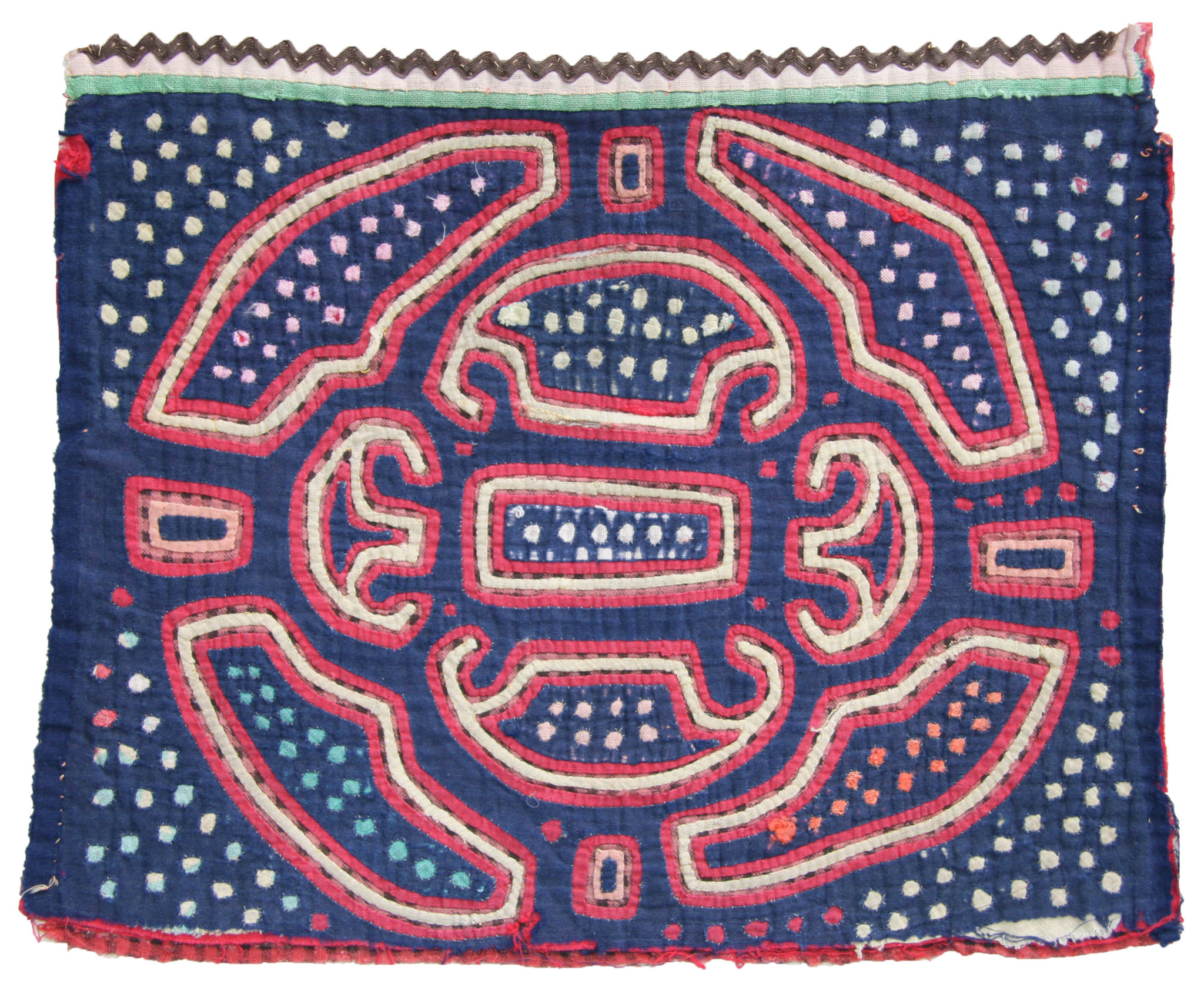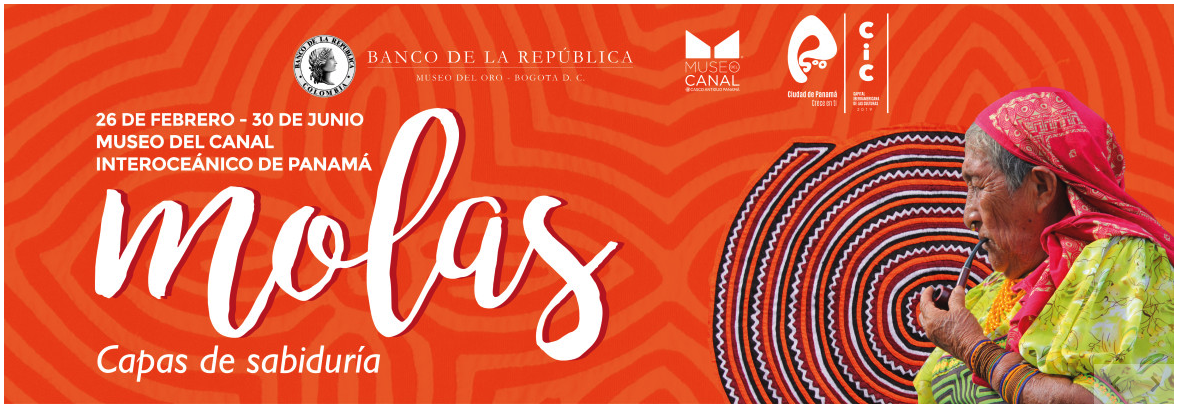
The Mola Museum is a “virtual museum” dedicated to the art of the Kuna (Guna) Indians. The Kunas live on the San Blas Islands east of Panama, in the Darien region of Panama, and in Colombia. Kuna women make and wear blouses decorated with appliqued cloth, reverse appliqued cloth and embroidery. The blouses, and their decorative front and rear panels, are referred to as molas. The best molas are remarkable works of art. The Mola Museum is dedicated to promoting this amazingly diverse art form. Our collection focuses on molas and other Kuna art made prior to 1975.
Nuchugana – Spiritual Healing Figures
The Guna (or Kuna or Cuna) people believe that all illness results from spiritual imbalance. So when someone becomes ill, the healer (Inatuledi) summons healing spirits that are stored within carved wooden figures called nuchugana (plural of nuchu). All Guna households have nuchu figures, and Inatuledi normally have a large assortment. Pre-1960 nuchugana are quite rare. This seated example shows strong sculptural qualities. It was collected by Kit Kapp in the 1960s.
Abstract Molas
Most people are familiar with pictorial molas. But older, traditional molas often feature abstract designs – or highly stylized renderings of beings or objects. This small mola, from the blouse of a young girl, features an abstracted image of a turtle. One mola collector we know has a saying, “If you can’t decipher the image on a mola, look for a turtle!” This example was collected by Bob and Marianne Huber, some time between 1968 and 1972.
Mola Exhibit at Museum of the Interoceanic Canal of Panama
The exhibit Molas, Layers of Meaning is now open at the Museo del Canal Interoceanica in Casco Viejo in Panama City. The exhibit was produced in collaboration with the Gold Museum of Bogota, Colombia. Over 200 molas are on display, including examples on loan from the Mola Museum. The exhibit closes June 30, 2019.
http://museodelcanal.com/exposicion-temporal-molas-capas-de-sabiduria/


